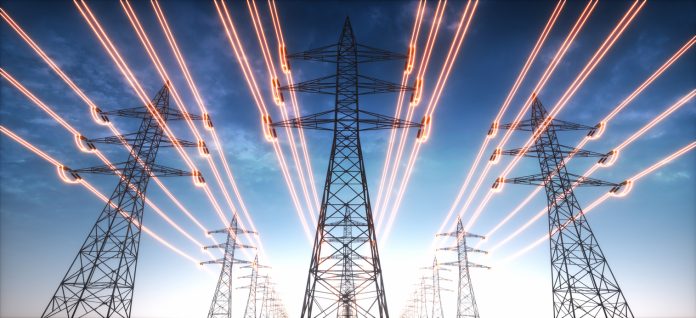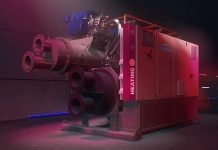Ebba Busch, Minister for Energy, Business and Industry and Deputy Prime Minister, Ministry of Climate and Enterprise, charts the energy policy priorities for Europe, including those of her own Government in Sweden
Europe, as an economic powerhouse, is stumbling; businesses are facing excessive energy costs, regulatory burdens and policy uncertainty. This reality is settling on the heels of Russia’s war on Ukraine; an uneven recovery from the COVID-19 pandemic and early phase-out of fossil-free energy has caused a severe energy crisis, high inflation, supply disruptions – and enormous uncertainty about Europe’s economic future.
Despite all these challenges, there is reason to be optimistic that by increasing our resilience and leaving politics out of energy policy, we can once again rebuild Europe as an economic powerhouse.
Economic policy is hard enough when policies focus on reconciling growth and efficiency with cohesion and social protection. Together with the aforementioned, economic policy in Europe will also require an accelerated green industrial revolution and energy transition despite slow permitting procedures and volatile energy supply while ensuring greater resilience in a multipolar order.
The culmination of these challenges has created an anxious conviction that disaster needs to be averted. Governing through fear rather than governing with hope has become the prevalent form of leadership. The anxiety is not unfounded; the green transformation of our economies represents the greatest socio-economic transformation of our time. Our ability to meet our targets will depend on our ability to supply enough fossil-free energy to scale up Swedish breakthrough technologies like fossil-free steel made of hydrogen-reduced iron ore.
Alleviate the energy crisis
Despite the challenges, the Swedish Presidency of the EU Council in the Spring of 2023 managed to lift its gaze from the short-term measures taken to alleviate the strains caused by the energy crisis and again focus on long-term measures.
Major steps were, for example, made on commission proposals to make sure the necessary frameworks are in place to accelerate the green transition, increase access to critical raw materials and components, including semiconductors and address high and volatile energy prices, accelerate investments in clean energy and security of supply.
The Fit-for-55 package, a set of proposals to revise and update legislation to meet the EU’s climate goal of reducing EU emissions by at least 55% by 2030, was finalised during the Swedish leadership. With the frameworks in place, an ambitious renewable energy target of 42.5% renewable energy by 2030 is combined with the first opening for producing low-carbon hydrogen derived from nuclear power included in the Renewable Energy Directive.
Take politics out of energy policy
As Minister for Energy, Business, and Industry, I have decided to take politics out of energy policy. Instead, we will define the characteristics and geographical location for energy production based on the natural laws of physics.
There is no natural fixation with any particular technology; however, nuclear energy is the only mature fossil-free energy source with the right characteristics to support the grid and can be expanded on a large scale to meet the challenges ahead. These criteria will also start applying to the weather-dependent technologies and push them to mature and start contributing to the whole grid.
The increased renewables target and the opening for low-carbon hydrogen are clearly underpinned by a de-risking approach that has recently become an integral part of policy for the EU. Russia’s weaponisation of oil and gas was a wake-up call. The conclusion drawn is that dependence on Russian gas might be dwarfed by our dependence on third countries for the necessary critical raw materials and components needed to enable the green transition.
Those conclusions were further strengthened in the wake of the Inflation Reduction Act and prompted calls for proposals that de-risked Europe’s dependence in other areas than energy and accelerated investments. The final shape of the Net Zero Industrial Act and Critical Raw Materials Act will ultimately emerge from the EU legislative process.
Despite only addressing the symptoms leading to long and unpredictable permitting procedures and not the root cause, the proposals, together with the rest of the Fit for 55-package have energised the leading Swedish prospecting, mining, and manufacturing industries that are leading the way to deliver on the promise of a green transition that increases European competitiveness and strengthens Europe’s resilience.
Deliver fossil-free energy at competitive prices
The sum of what we have achieved so far makes me optimistic, unlike many of those who govern with fear. Despite being on the right track, our ability to deliver on those promises is underpinned by our ability to deliver fossil-free energy at competitive prices where it is needed when it is needed.
To do so, the system must contain a significant proportion of plannable electricity production that is controlled according to need and that produces regardless of weather and wind.
In most parts of Europe, the electricity that can be planned is produced with coal or fossil gas.
The energy crisis is leading a renaissance for nuclear energy across Europe. Nuclear power can be placed where it contributes to the electricity system and thus reduces the need to transmit electricity over long distances; it contributes both with stable and predictable production of electricity and a range of capabilities that strengthen the robustness of the electricity system and the ability to transfer electricity to where it is needed when it is needed and thus effectively enables the connection of industries.
By strengthening the electricity system, nuclear power production also creates the conditions to connect weather-dependent electricity production. Nuclear power will also contribute large amounts of fossil-free hydrogen, crucial to producing fossil-free steel.
The future of energy is bright
I believe the future is bright, and there are reasons to be optimistic. Yes, we are currently suffering from the external shocks that have only worsened by the early phase-out of fossil-free energy and dependencies. However, an awakening is leading to the necessary decisions being made.
The green transition, or rather green industrial revolution, is creating more jobs than we can fill, which is a curse in the short term but a blessing for adolescents. I dare to believe we will meet our highly set climate targets while increasing our competitiveness and strengthening Europe’s resilience.
Contributor Details
Editor's Recommended Articles
-
Must Read >> £5 billion of energy investment projects announced
-
Must Read >> £3m to boost low carbon heating













